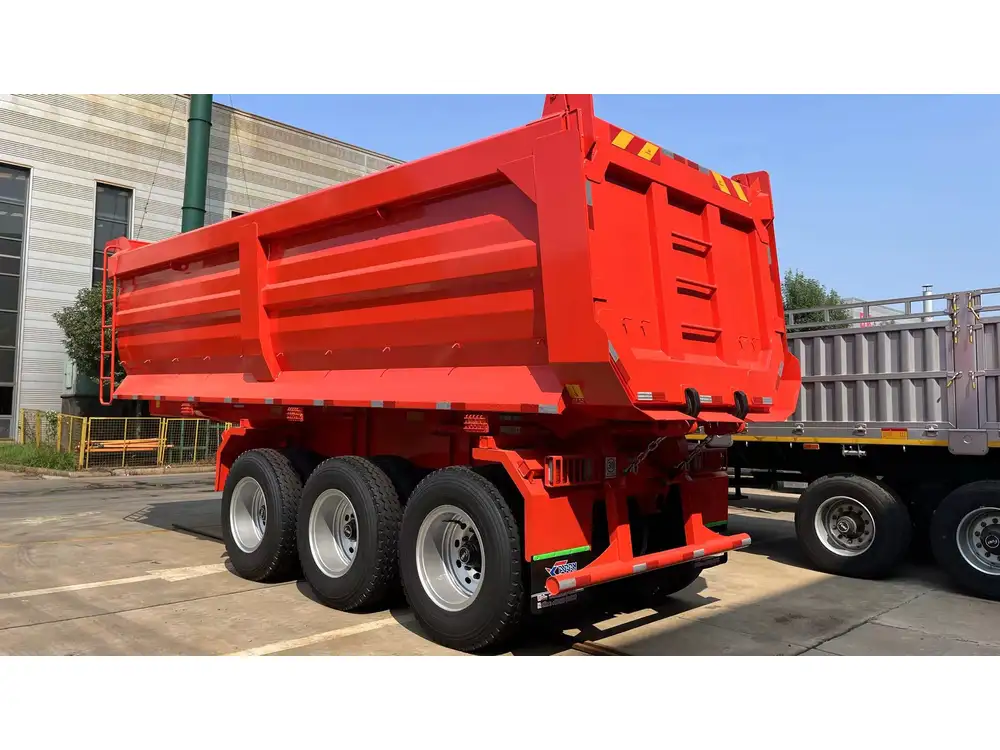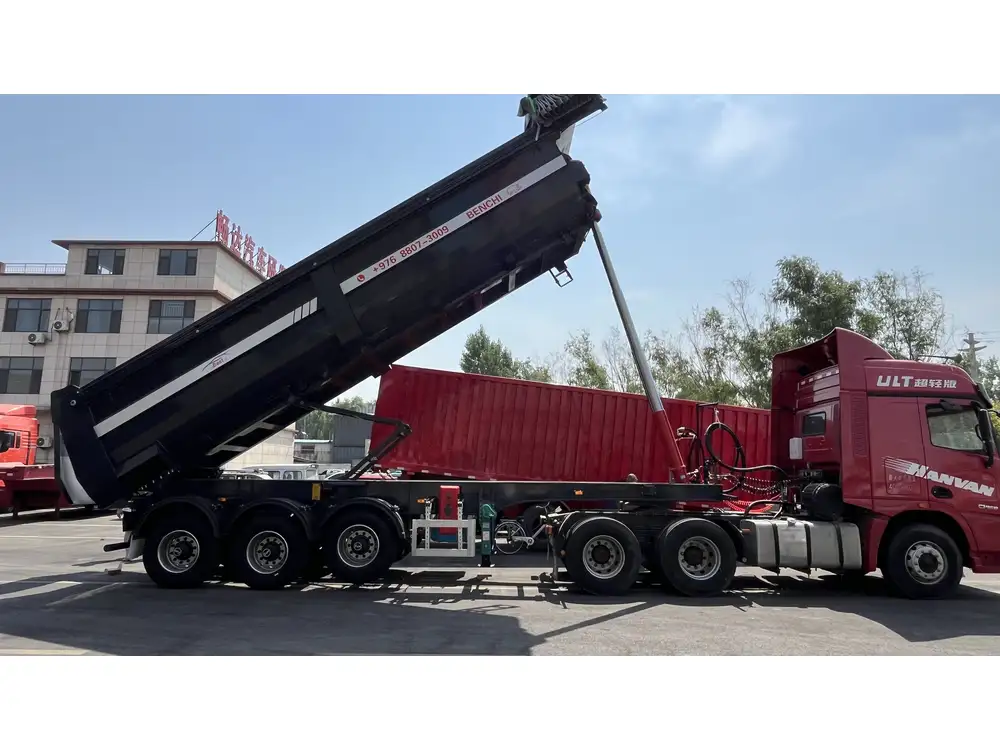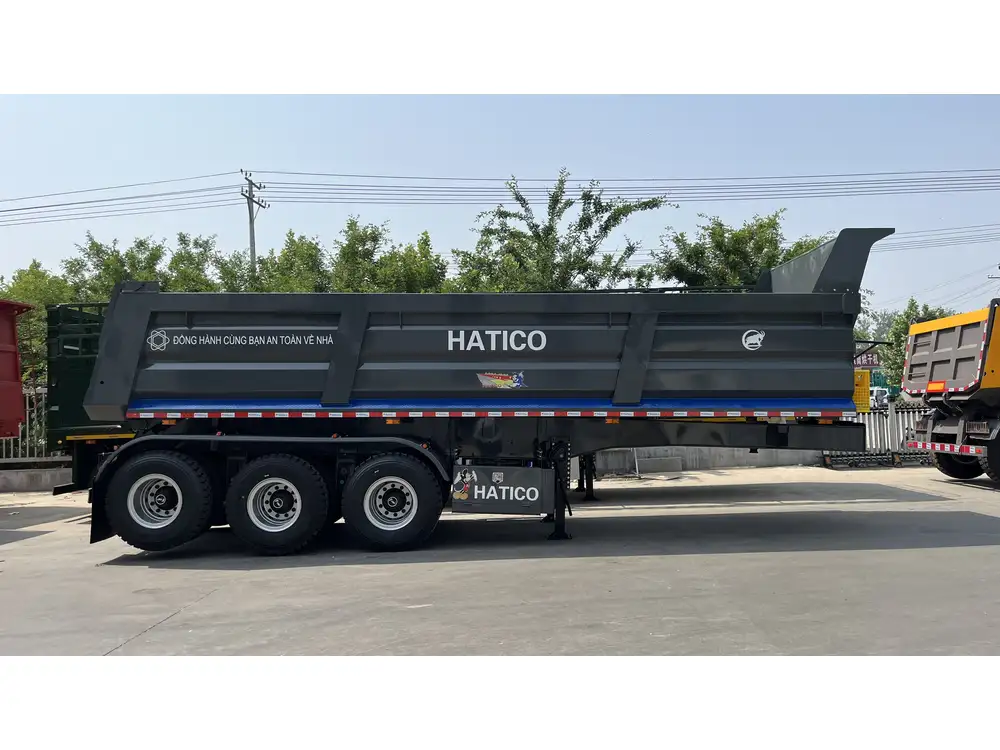In the world of logistics and transportation, understanding the value of a semi-trailer is crucial for both buyers and sellers. The worth of a semi-trailer varies significantly based on multiple factors including, but not limited to, age, condition, type, and market demand. This article provides an in-depth analysis of how much a semi-trailer is worth, helping you make informed decisions whether you are purchasing or selling.
Factors Affecting Semi-Trailer Valuation
1. Age and Condition
Age: Typically, the age of a semi-trailer plays a vital role in its depreciation. Newer semi-trailers tend to have higher resale values due to updated technology, improvements in safety, and better fuel efficiency.
Condition: The physical state of the trailer encompasses everything from visible wear and tear to mechanical integrity. A well-maintained trailer, even if a few years old, can fetch prices close to those of a new one.

Table: Age and Condition Impact on Value
| Age (Years) | Excellent Condition | Good Condition | Fair Condition | Poor Condition |
|---|---|---|---|---|
| 0-2 | $40,000 – $60,000 | $35,000 – $50,000 | $30,000 – $40,000 | $15,000 – $25,000 |
| 3-5 | $30,000 – $50,000 | $25,000 – $40,000 | $20,000 – $30,000 | $10,000 – $20,000 |
| 6-10 | $20,000 – $30,000 | $15,000 – $25,000 | $10,000 – $15,000 | $5,000 – $10,000 |
| 10+ | $10,000 – $20,000 | $5,000 – $10,000 | $2,000 – $5,000 | $500 – $2,500 |
2. Type of Semi-Trailer
Semi-trailers come in various types, each designed for specific purposes. The type significantly affects the trailer’s worth.
Flatbed Trailers: Versatile and widely used; their prices typically range from $25,000 to $50,000.
Refrigerated Trailers (Reefers): Due to their specialized equipment for temperature control, they are generally higher in value, ranging from $30,000 to $70,000.
Tanker Trailers: Used for transporting liquids; these trailers can vary widely in price, typically between $30,000 and $100,000.
Curtain Side Trailers: Offering flexible loading options; these typically range from $25,000 to $55,000.
Table: Semi-Trailer Types and Average Price Ranges
| Trailer Type | Price Range | Notes |
|---|---|---|
| Flatbed | $25,000 – $50,000 | High versatility; often in demand |
| Refrigerated | $30,000 – $70,000 | Specialized; higher depreciation |
| Tanker | $30,000 – $100,000 | Subject to regulations; value varies with materials |
| Curtain Side | $25,000 – $55,000 | Easy loading/unloading; good for diverse cargo |

3. Market Demand
The economic environment significantly influences semi-trailer prices. In times of economic growth, demand surges, resulting in higher prices. Conversely, during a downturn, prices typically drop. Additionally, regional demands can vary; for instance, areas with high agricultural output may see higher demand for certain trailer types.
4. Brand Reputation and Features
Certain brands hold a stronger reputation than others, which directly impacts resale value. Brands known for durability and performance, like Trailmobile or Great Dane, often command higher prices.
Features that Add Value:
- Additional axles for weight distribution
- Advanced braking systems
- Enhanced fuel efficiency features
- Built-in tracking and monitoring systems

5. Custom Modifications
If a semi-trailer has undergone customizations, such as enhanced loading capabilities or specialized compartments, its value may increase significantly. Custom-built trailers can fetch higher prices, depending on the uniqueness and functionality of the modifications.
Evaluating Your Semi-Trailer
To accurately assess the market value of a semi-trailer, several steps should be undertaken.
Step 1: Condition Assessment
- Visual Inspection: Check for signs of damage, rust, or wear.
- Functional Testing: Ensure all mechanical parts (e.g., brakes, lights) are fully operational.

Step 2: Research Comparable Sales
Conducting a market analysis on recently sold semi-trailers similar to yours can provide a solid baseline for determining its value. Websites such as TruckPaper and TractorHouse can offer insights into current market trends and pricing.
Step 3: Consult a Valuation Expert
For a more precise valuation, consider consulting professionals who specialize in commercial vehicle appraisals. They can provide insights based on comprehensive market analysis and trends.
Selling Your Semi-Trailer
When it comes to selling your semi-trailer, a strategic approach is essential to maximize profit.

1. Prepare for Sale
- Conduct Repairs: Address minor issues that could deter buyers.
- Clean Thoroughly: An immaculate trailer resonates with buyers and portrays value.
- Document Service Records: Maintain a detailed history of maintenance to assure potential buyers of the trailer’s condition.
2. Craft a Comprehensive Listing
Ensure your listing on platforms like eBay, Craigslist, or specialized trucking sites contains:
- High-quality images showing different angles
- Detailed specs, including year, make, model, and mileage
- A narrative of its usage and maintenance history
3. Understand Negotiation Tactics
Be prepared for negotiations. Understand your lowest acceptable price and ensure potential buyers are aware of the trailer’s value.

Buying a Semi-Trailer
When purchasing a semi-trailer, you need to navigate several key considerations.
1. Define Your Needs
Establish clear requirements based on the type of cargo you will transport, the distance of trips, and the terrain involved.
2. Evaluate Financing Options
If you aren’t paying outright, understand your financing options. Many buyers opt for loans specifically tailored for commercial vehicles.

3. Inspect Before You Buy
Never skip a thorough inspection before buying a used semi-trailer. Consider hiring a mechanic who specializes in trailers to provide a detailed assessment.
4. Understand Warranty Options
Be aware of any warranties that may cover your purchase to protect against unforeseen expenses.
Conclusion
Understanding how to assess the worth of a semi-trailer is indispensable in the logistics and transportation industry. With age, condition, type, market demand, and custom features being pivotal factors in determining value, meticulous attention must be paid while both buying and selling. By following outlined strategies for evaluation, sellers can optimize profit, and buyers can ensure they make informed acquisitions that align with their operational needs.
Equipped with this knowledge, stakeholders can navigate the semi-trailer market with confidence, leading to better decision-making and successful transactions. As trends in the transport industry evolve, staying informed on the value of semi-trailers will remain a critical element for anyone involved in freight transportation.



